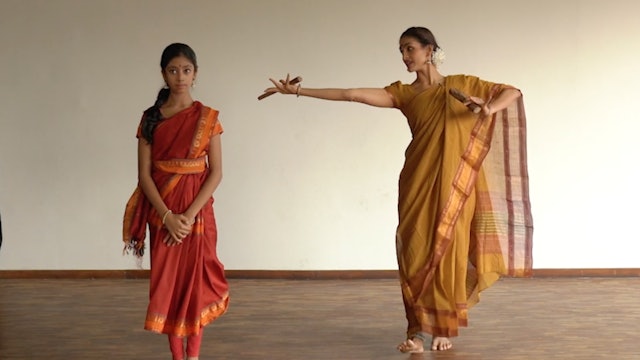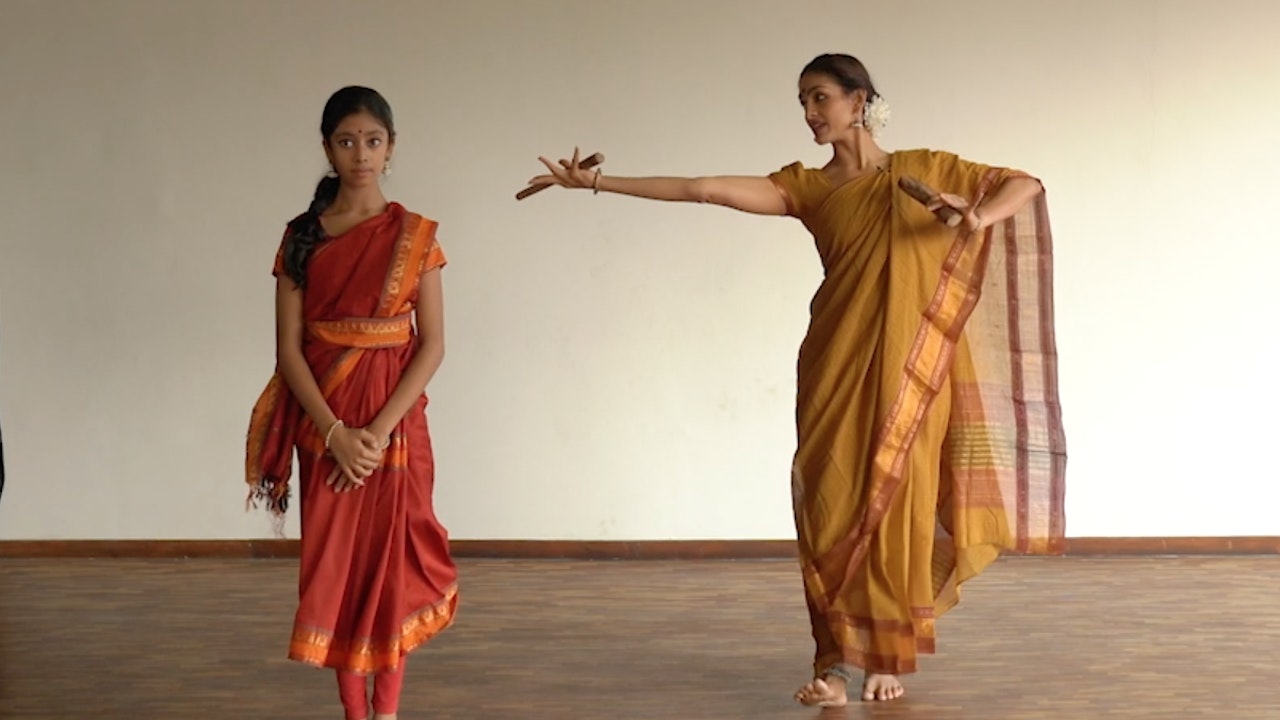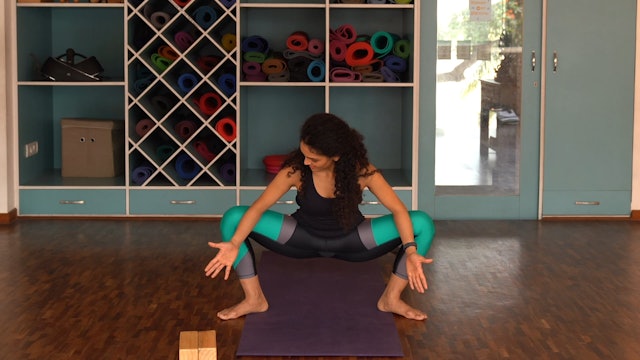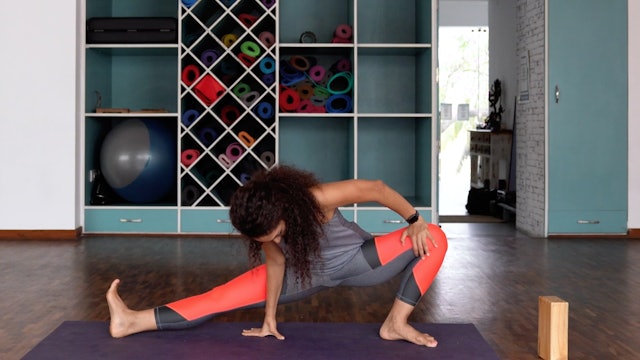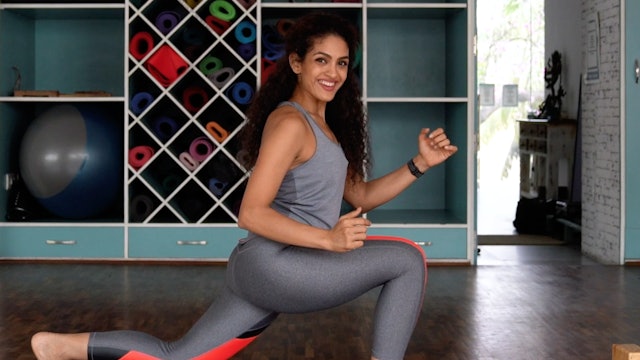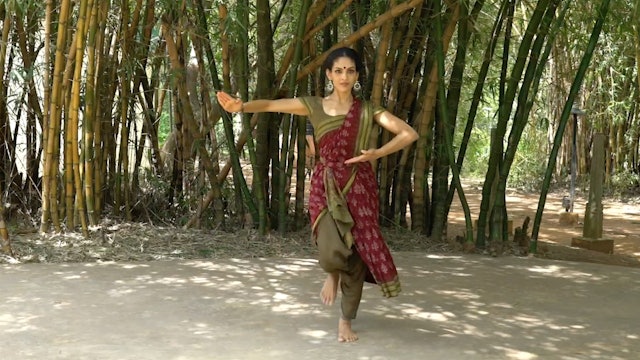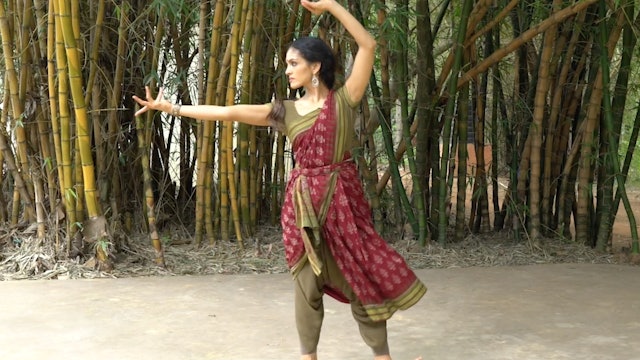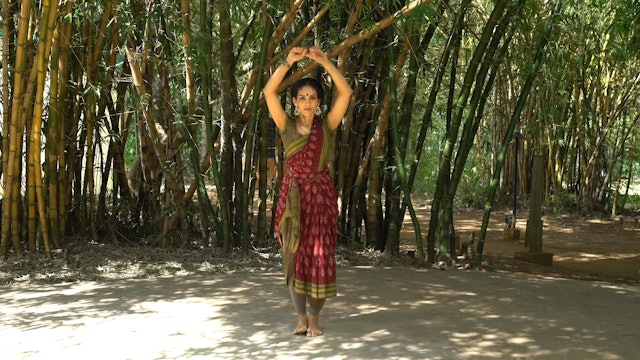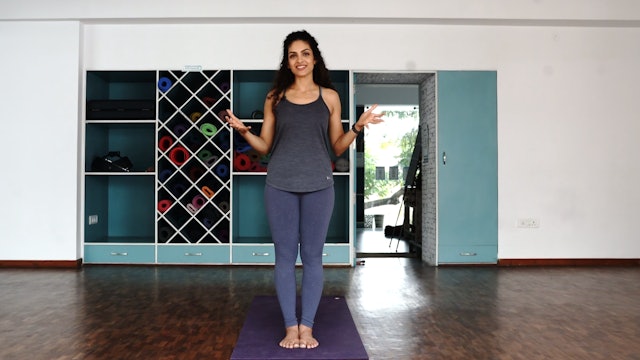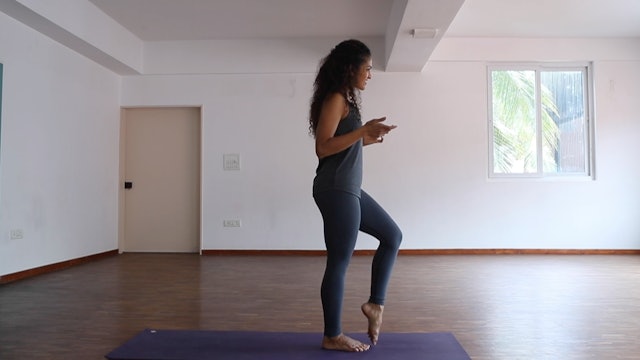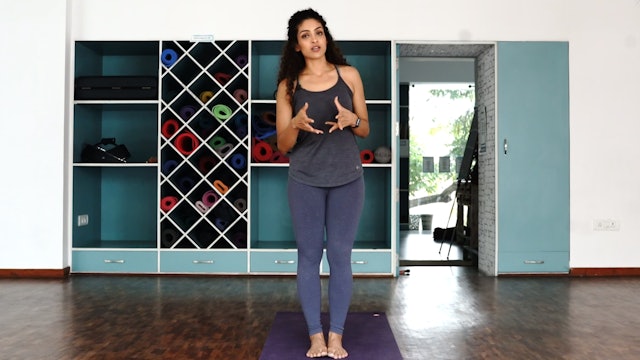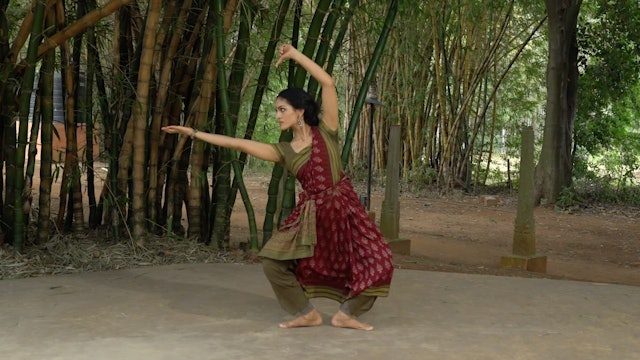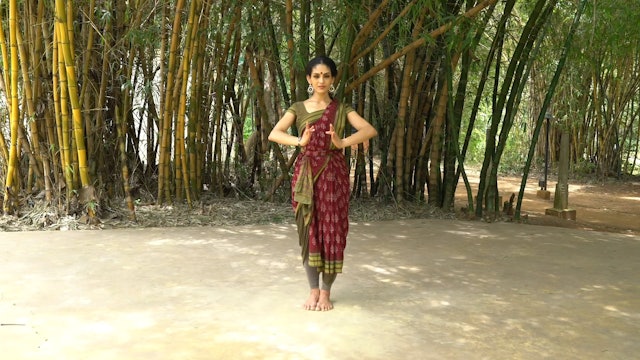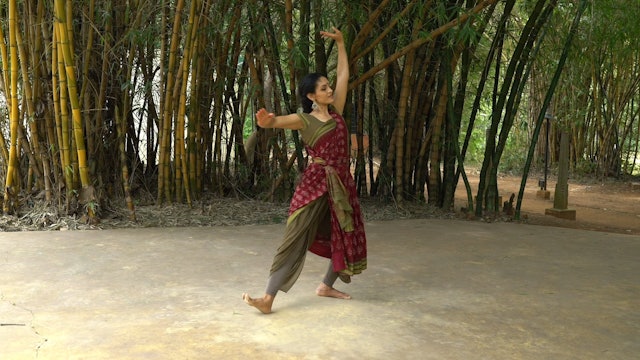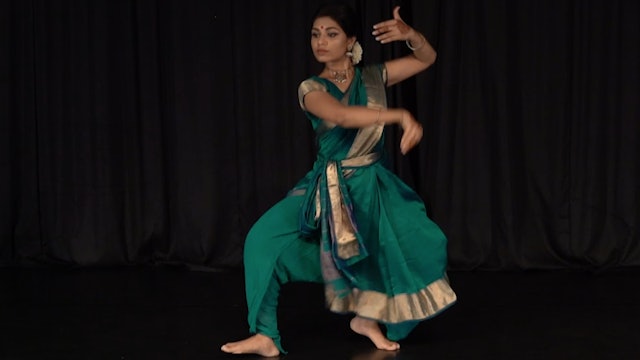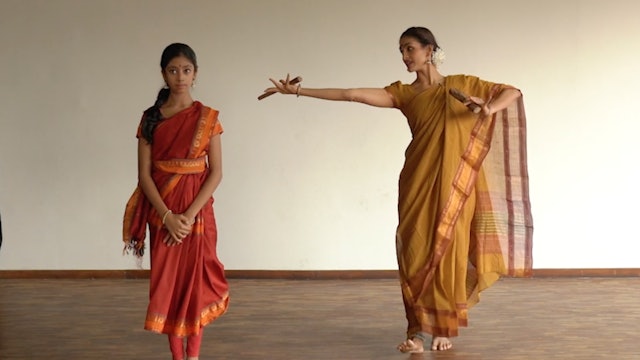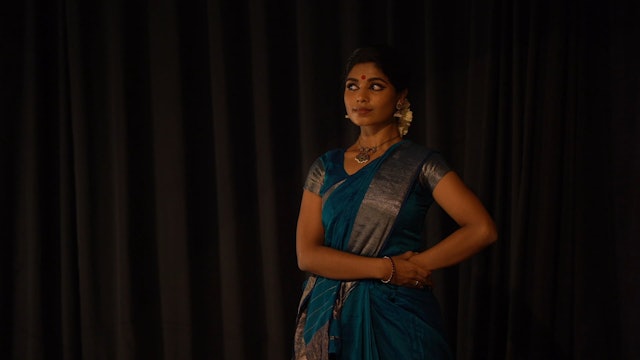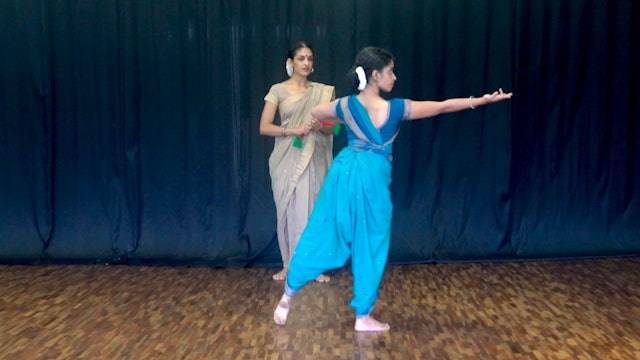Playlist 24
This playlist has the last instructional video that completes the Jatiswaram, and introduces the beginning of a series of short videos on alignment and awareness when performing jumps. There is also a new strength regimen that concentrates on the core, that is introduced.
-
Hip Openers
This series can be practiced after a basic warm up, before beginning an Adavu practice.
The hip opener series will help you navigate through tight hips. It will help you mobilise your hips and enable you to push your thighs back while sitting in Araimandi. Please do this in combination with str...
-
Core: Obliques and crunches
This video works on the core muscles through this video. You must be warmed up before doing this exercise regimen.
The core exercises introduced previously in this strength series will help the student prepare for this regimen. You should not feel any pain in your neck or back when doing these ...
-
Knee Alignment 7: Alidam
This video will address knee alignment in Alidam, while simplifying the exercise for those who need to work slowly.
Align your knees and stay safe. These videos will help you reinforce alignment and thus help you employ proper usage of the knee joint through movement. The videos will address com...
-
Knee Alignment 6: Lunges and variations
This video will address knee alignment during a lunge, while adding variations that challenge the strength during movement.
Align your knees and stay safe. These videos will help you reinforce alignment and thus help you employ proper usage of the knee joint through movement. The videos will add...
-
Jaar Adavu/ Sarikal Adavu 2
'Jaaru', literally means, to slide. This is also called the Sarikal Adavu. In the RK Method, we refer to the standing series that end in Samapada as the Jaar Adavu series and the other sliding Adavus that use Muzhumandi, and Aalidam as Sarikal adavus for simplicity.
This Adavu incorporates the ...
-
Bramari Adavu
Bramari literally means to turn. The first Bramari adavu is introduced in the second set of Adavus, the other varieties will be introduced subsequently. It is important to keep the eyes focussed at a particular point and turn the head faster than the body.
Things to keep in mind:
- When stretc... -
Korwe Adavu 1
The Korwe adavu is a combination of previously introduced foot and body articulations. It is called a Korvey adavu as it cannot be placed into any specific category. It has a Tattu, naatu, Bramari, Serikal amongst other movements. Some Korwe adavus also use a Kudittam in the feet.
Things to kee...
-
Jumps: Introduction
This series will deal with a number of short exercises that will help the student develop awareness and alignment when jumping. It must be done in combination with the strength exercises to have maximum benefit.
Please do not do the jumps if you experience knee pain.
You must be warmed up befo... -
Using your feet in a jump
This series will deal with a number of short exercises that will help the student develop awareness and alignment when jumping. It must be done in combination with the strength exercises to have maximum benefit.
Please do not do the jumps if you experience knee pain.
You must be warmed up befo... -
Jumps in Parallel
This series will deal with a number of short exercises that will help the student develop awareness and alignment when jumping. It must be done in combination with the strength exercises to have maximum benefit.
Please do not do the jumps if you experience knee pain.
You must be warmed up befo... -
Korwe Adavu (utplavana 1 )
The Korwe adavu is a combination of previously introduced foot and body articulations. It is called a Korvey adavu as it cannot be placed into any specific category. It has a Tattu, naatu, Bramari, Serikal amongst other movements. Some Korwe adavus also use a Kudittam in the feet.
Things to kee...
-
Theermana Adavu 3
The Theermana or Makutadavu, is placed at the end of a Korwe or Jathi in specific rhythmic patterns, to create an ending.
The leg is either placed outstretched directly in front or at a diagonal of 45 degrees. The foot is flexed and the heel strikes the floor. In the Raadha Kalpa method we begi...
-
Theermana Adavu 3, variation
The Theermana or Makutadavu, is placed at the end of a Korwe or Jathi in specific rhythmic patterns, to create an ending.
The leg is either placed outstretched directly in front or at a diagonal of 45 degrees. The foot is flexed and the heel strikes the floor. In the Raadha Kalpa method we begi...
-
Pushpanjali
Pushpanjali
Raaga: Aarabhi
Aditala
Composer: Dr Balamuralikrishna
Choreography: Rukmini VijayakumarThe Pushpanjali is choreographed with many rhythmic layers. You will have an appending document that you can download to understand the Rhythm clearly.
There is an added verse from the Ganesha P...
-
Jatiswaram: Part 8
Raga : Rasikapriya
Adi Tala
Composer : Lalgudi G JayaramanThe Jatiswaram will be taught in parts with detailing on rhythm and alignment.
A Jatiswaram is traditionally performed after an Alaripu or Pushpanjali in a BHaratanatyam performance, a combination of Jatis and Swaras, it is a piece that...
-
Jatiswaram: Raga Rasikapriya
The second piece that is traditionally presented in a Margam is a Jatiswaram. A Jatiswaram is named as such because it is a combination of a Jathis and Swarams. It begins with a Jathi typically followed by the Pallavi, Anupallai and Charanams, to which multiple Korwes are choreographed.
This pa...
-
Tillana: Introduction
Tillana
Raga : Vallachi
Adi Tala
Composer: Dwaraki Krishnaswamy
Choreography: Guru Narmada, (reinterpreted by Rukmini Vijayakumar)A Tillana is usually the last piece in the performance of a Margam. Adapted from the Tarana, of Hindustani music, the Tillana reflects the joy of finally reaching t...
